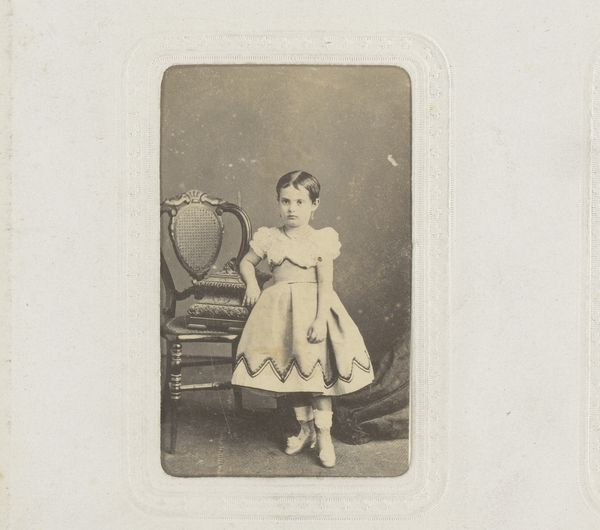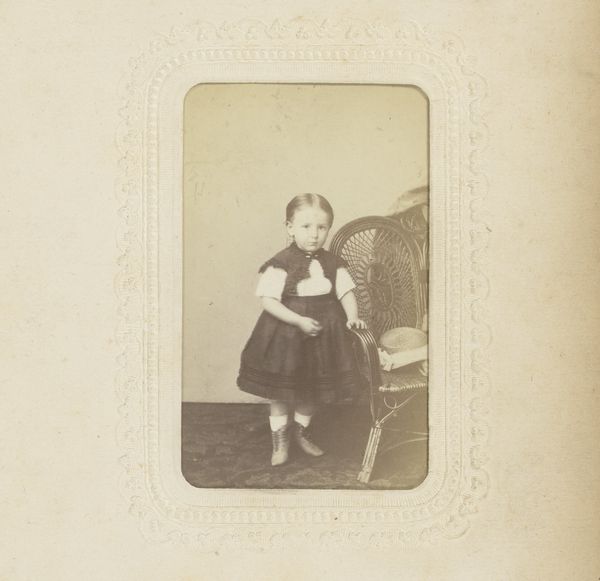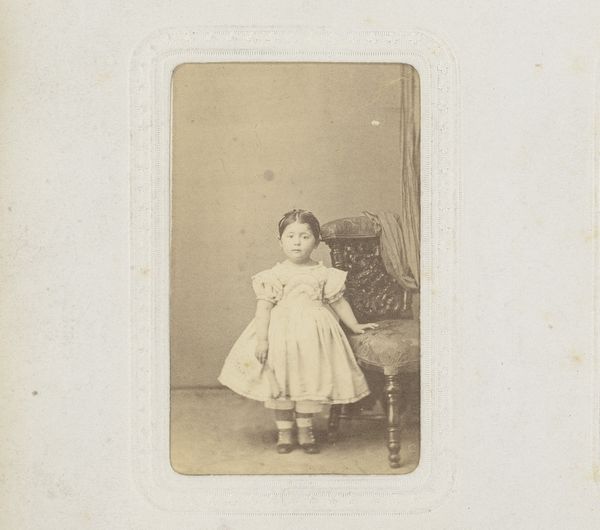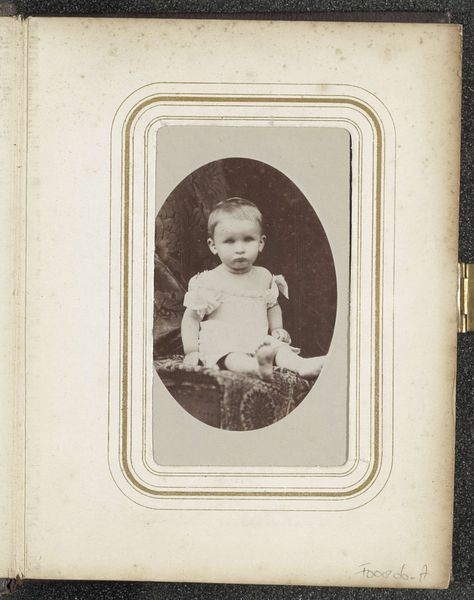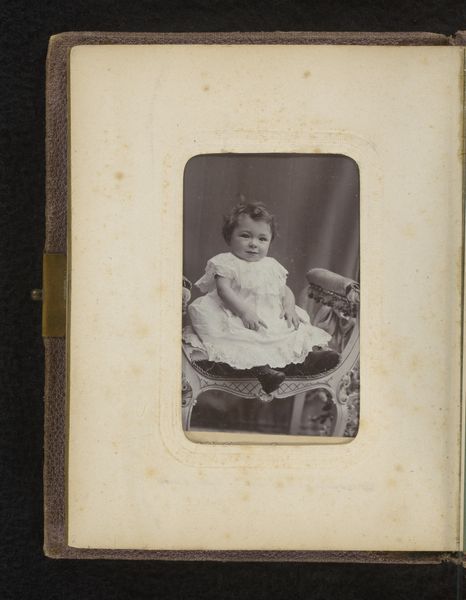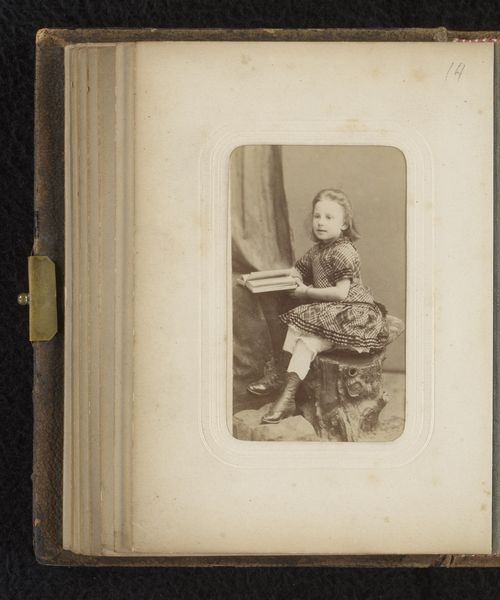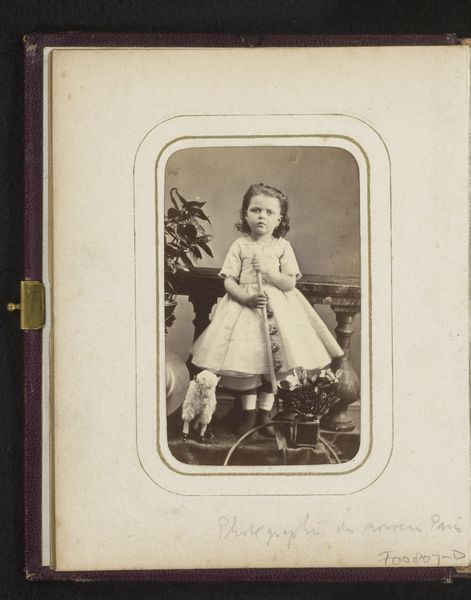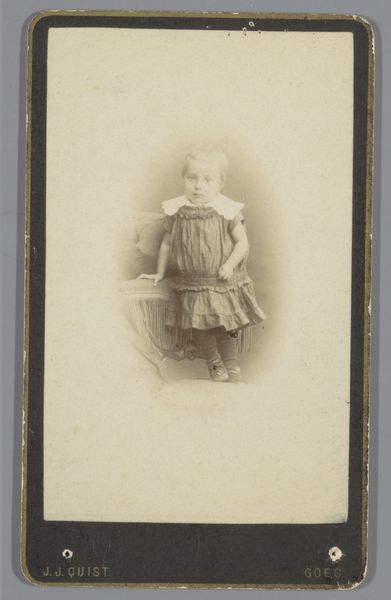
Portret van een kind in een jurk, staand bij een tafel met papieren in de handen 1872 - 1874
0:00
0:00
Dimensions: height 89 mm, width 56 mm, height 101 mm, width 63 mm
Copyright: Rijks Museum: Open Domain
Curator: This gelatin-silver print, crafted between 1872 and 1874 by Binger & Chits, presents a formal portrait of a child in a dress, posed beside a table with papers in hand. Editor: The overall feeling I get is seriousness, almost a somber tone, despite it being a portrait of a young child. Her gaze is intense, and the composition feels quite deliberate. Curator: The solemnity you observe speaks to the conventions of portraiture at the time. Photography was still quite novel, an important public-facing symbol, so the sitter was made to appear respectable above all else, whether child or adult. Such photography reinforced familial or middle class identities. Editor: That makes sense. The papers the child holds--they aren’t simply props, I imagine. I see in them a symbol of burgeoning literacy, an aspiration for education that could represent her entire future at that moment. Even the boots appear more robust, communicating status through visual motifs of material worth. Curator: Precisely. Children’s portraits, especially, often functioned to broadcast a family's aspirations. And in an era where child mortality was significant, such portraits took on commemorative meaning. Consider the child’s gaze, too: rather than innocent naivete, the aim was maturity beyond their age, with dress, styling, and pose amplifying her future role within a society where women of the family bore significant responsibilities in the public sphere. Editor: And this tension is why the photograph retains such a lingering, complex appeal today. We're used to much less posing and artifice from photographs nowadays, of children especially. In looking at this photograph we remember social aspirations that echo even today, however sublimated by cultural evolutions. Curator: Indeed. Understanding photography's origins as tools to fashion social and class presentation invites deeper consideration of even today's images. Editor: Looking closely here makes it much clearer how every object, down to the pattern of the wallpaper, creates deeper meanings, even in photographs.
Comments
No comments
Be the first to comment and join the conversation on the ultimate creative platform.



